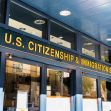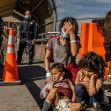He came to the United States to avoid being tortured or killed. The Board of Immigration Appeals (BIA) denied his right to protection because he failed to provide enough credible testimony about the dangers he would face if he returned to El Salvador. He appealed their decision and won. Now he gets another chance to prove he is more likely than not to be tortured if he has to return to his former home.
This case concerns Miguel Angel Velasquez-Samayoa, who petitioned U.S. Attorney General Merrick Garland for review of the order by a BIA Immigration Judge (IJ). The BIA is a branch of the Department of Justice that is charged with interpreting and applying immigration laws. The BIA denied Velasquez-Samayoa protection demanded by the United Nations Convention Against Torture (CAT).
District Judge Michelle T. Friedland authored the unanimous remand opinion of a three-judge panel of the United States Court of Appeals for the Ninth Circuit on June 24. She said the BIA failed to properly assess the aggregate risk of torture and to properly consider the expert testimony presented by the petitioner.
Friedland’s opinion begins with a description of Velasquez-Samayoa’s personal history. He came to the United States when he was two or three years old and has lived here for 40 years. In 1995, he joined the White Fence (WF) gang, which is the rival of another gang called Mara Salvatrucha (MS-13). To prove his affiliation, he had “WF” tattooed on his neck and leg in large calligraphy script letters that are six inches high and three inches wide.
Velasquez-Samayoa was convicted of multiple felonies and sentenced to 18 years in prison in 1998. During his incarceration, he was stabbed by rival gang members and placed in protective custody. With the help of a prison psychologist, he realized that he had “wasted his life” when he was a gang member. After his release, the Department of Homeland Security detained him and began proceedings that would send him back to El Salvador.
He turned to the United Nations Convention against Torture and Other Cruel, Inhuman or Degrading Treatment or Punishment to deter his removal in 2020. This “instrument” holds that member nations, including the United States, “shall take effective legislative, administrative, judicial or other measures to prevent acts of torture in any territory under its jurisdiction.” The BIA, thus, had to make a CAT analysis of petitioner’s case.
The BIA held a hearing before an IJ. Both petitioner and his expert witness, Dr. Thomas Boerman, testified about the dangers of torture that Valasquez-Samoyoa would face if he returned to El Salvador. Boerman was qualified as an expert on gang activity and violence in El Salvador.
Velasquez-Samayoa and Boerman both claimed Velasquez-Samayoa “would be killed or tortured either by Salvadoran officials or rival gang members” because of his gang tattoos. Boerman explained that the United States would send information about his gang membership to the government of El Salvador when he was returned which, he believed, would lead to his “likely…torture in government custody.” He also said petitioner would face similar risks from MS-13 and other gangs. He explained that his “status as a middle-aged man” would “make him appear to be a gang leader…and thus a target for torture.” He also testified that “few gang members live to be forty,” so petitioner’s age would make him “targeted as a gang leader.”
The BIA’s IJ ordered Velasquez-Samayoa to be “removed” to El Salvador. His denial, based on precedent, laid the foundation for the grant of his appeal. The IJ said the petitioner had to “establish that every step in the hypothetical chain of events” were more likely than not to occur. One of the main reasons for the denial was the lack of corroborating evidence to Boerman’s testimony. No one could detail all possible steps in his alleged torture.
But the Ninth Circuit’s opinion, based on the standard for CAT relief, “compel(ed) a contrary conclusion,” Friedland wrote. She explained that the petitioner had to “show only a chance greater than fifty percent that he will be tortured if removed.” She said that this standard will be in effect even if his risk of torture comes from multiple sources as Velasquez-Samayoa claimed when he said that threats would come from both the government and rival gangs. She said the decision must be based on “the aggregate risk of torture from all sources.” It was not necessary to provide proof about each individual threat.
She ruled that “Here, the BIA misapplied our precedent” because it should not have performed individual analyses on each theory that concerned the possible multiple sources of danger. The BIA, she said, “erred by failing to assess Velasquez-Samayoa’s overall risk of being tortured.” Separate analyses incorrectly “increased his CAT burden.”
In addition, Friedland agreed that the BIA erred by “disregarding credible expert testimony.” She noted that the BIA had credited Boerman as an expert and could not reject his testimony “for the sole reason that it is not corroborated by additional evidence.”
Friedman concluded that BIA’s errors led to the Ninth Circuit’s grant of Velazquez’s petition for review. It was thus remanded with instructions that the BIA “properly consider Dr. Boerman’s testimony” and all evidence relevant to the possibility of future torture.
For now, Velasquez-Samayoa is safe in his adopted country. He will get a new CAT analysis from the BIA with strict instructions from the Ninth Circuit about how the Bureau is to proceed.






